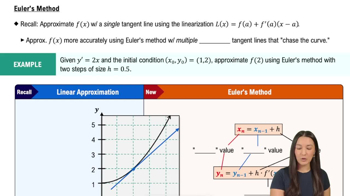Evaluating integrals Evaluate the following integrals.
∫₋₂² (3𝓍⁴―2𝓍 + 1) d𝓍
 Verified step by step guidance
Verified step by step guidance Verified video answer for a similar problem:
Verified video answer for a similar problem:



 5:43m
5:43mMaster Definition of the Definite Integral with a bite sized video explanation from Patrick
Start learning